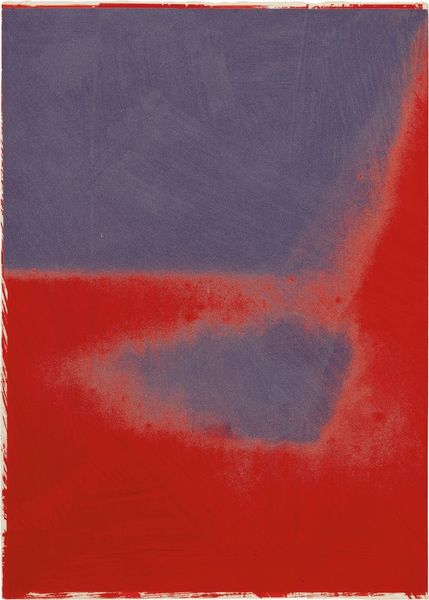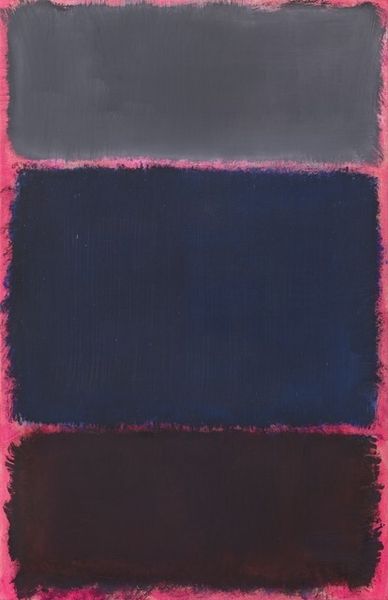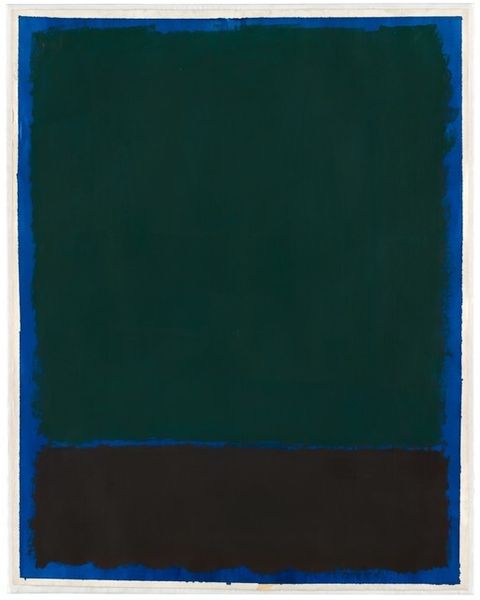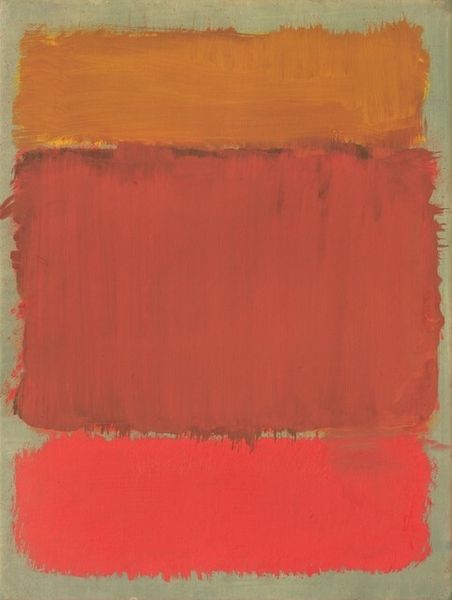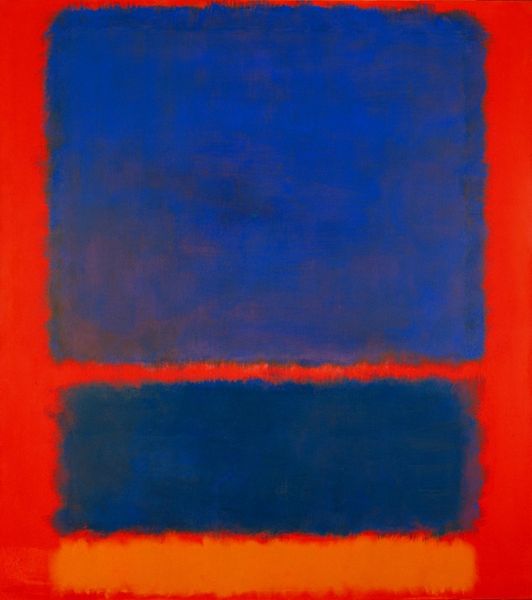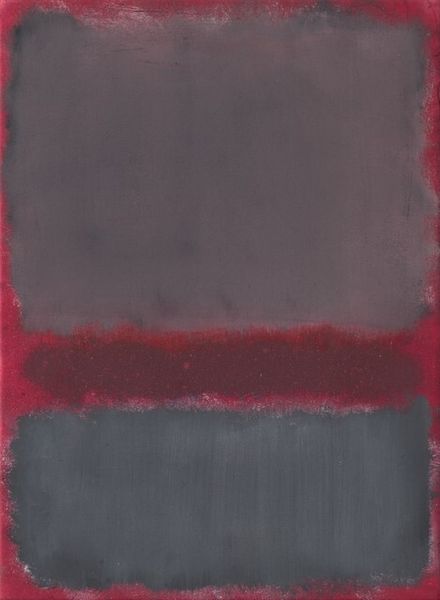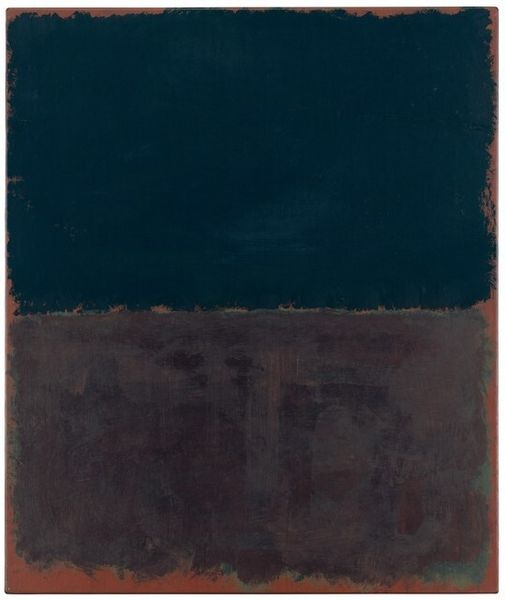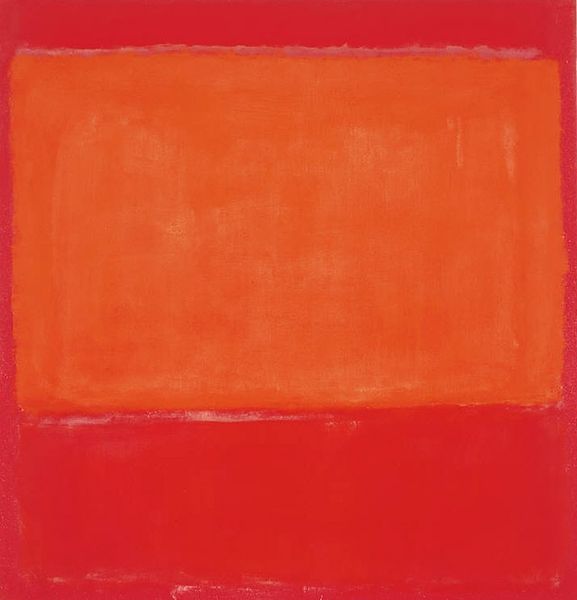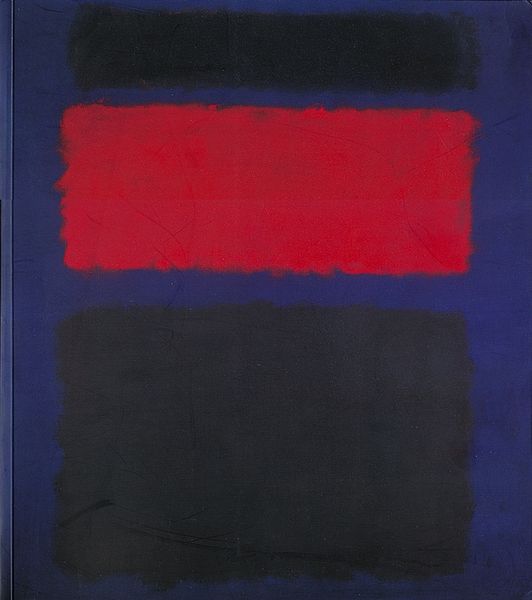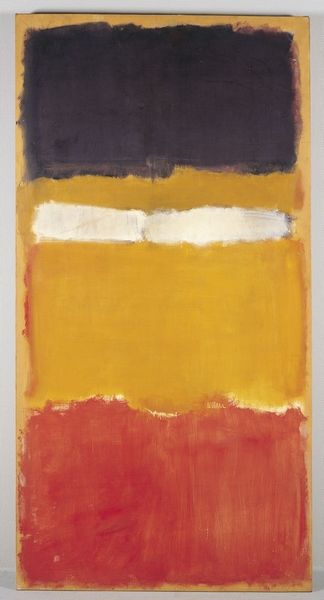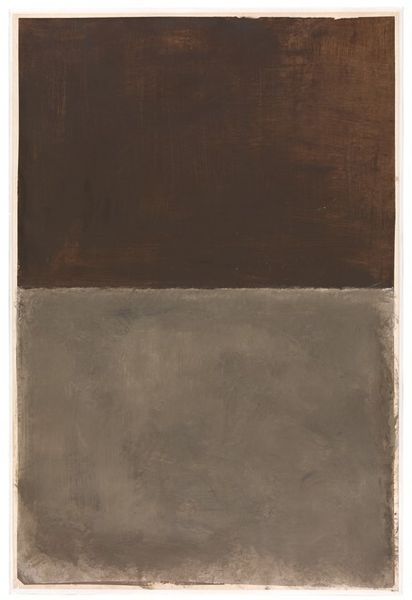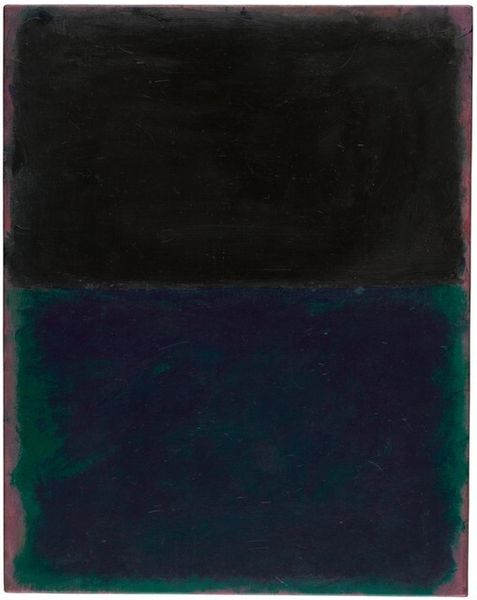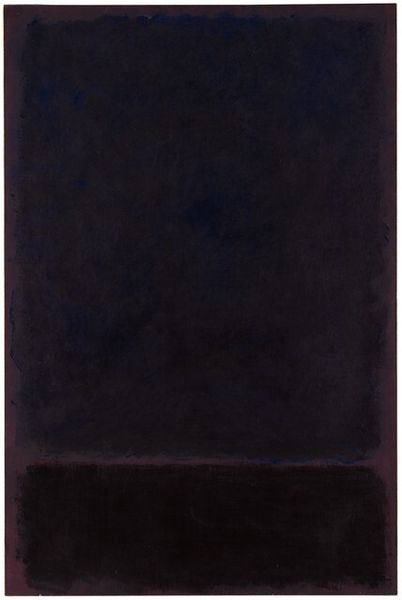
painting, oil-paint
#
abstract-expressionism
#
abstract expressionism
#
abstract painting
#
non-objective-art
#
painting
#
oil-paint
#
landscape
#
colour-field-painting
#
painted
#
abstraction
#
modernism
Copyright: Mark Rothko,Fair Use
Curator: Let’s turn our attention to this "Untitled" painting by Mark Rothko from 1959. Rothko, of course, being one of the leading figures of Abstract Expressionism and Colour Field painting. Editor: Whoa. It kind of swallows you whole, doesn't it? Those colors are doing a number on my soul right now... Feels like gazing into a really chic abyss. Is that dramatic, or what? Curator: Well, let’s unpack that a bit. Rothko's work often aims to transcend mere aesthetics and evoke profound emotional and spiritual responses. Considering the socio-political context of the late 1950s, during the height of the Cold War, many interpreted abstraction as a retreat from representing the visible world, opting to convey universal human experiences of anxiety and alienation. Editor: Okay, anxiety, I get that. But to me, it’s like these colors are vibrating at different frequencies. The deep blues above like a calm ocean that then butts up against that pulsing red, kind of angry and intense, then settling on the sombre darkness beneath. It's almost primal in its emotional architecture, right? Curator: Indeed. And Rothko was very particular about the presentation of his work. He wanted viewers to stand close, allowing the monumental scale and the layered fields of color to envelop them, thereby creating an almost meditative experience. Some scholars have linked the rectangles of color to landscapes, or perhaps even to the human form, subtly alluding to traditional subject matter. Editor: Landscape? Hmmm… Maybe. But to me, it also has to do with boundaries dissolving, where colours aren’t contained; they bleed into each other. This work rejects conventional form. You almost get lost in its ambiguities. It makes you feel wonderfully unsettled, y'know? Like, "Am I allowed to feel this?" Curator: Rothko once said his paintings were not about color but about death and tragedy. Perhaps that sense of unease you’re describing is the ghost of existentialism, a movement so pertinent during Rothko's time, informing how he saw and processed the world around him. Editor: You know, staring at this painting now, and thinking about everything we've discussed… Yeah, I guess I see a little of that in it too. It’s like the painting reflects whatever you bring to it. Pretty powerful stuff, actually. Curator: Yes, his oeuvre opens avenues into critical discourses surrounding Modernism and the philosophy of the self. It’s that continuous re-evaluation that makes him one of the greats.
Comments
No comments
Be the first to comment and join the conversation on the ultimate creative platform.
